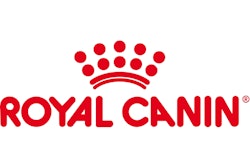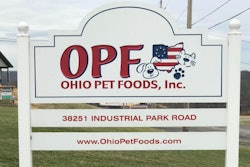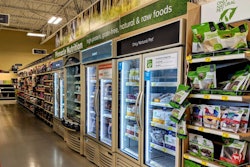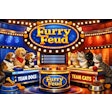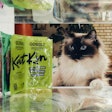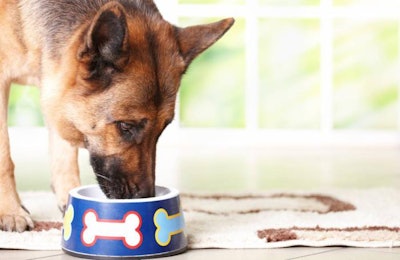
Rising prices for popular breeds and a shortage of shelter dogs may mean growth opportunities for breed-specific pet foods in the wake of the ongoing COVID-19 pandemic. With movement restrictions continuing to keep people homebound in many nations, the demand for purebred dogs and breed-specific diets may stay strong in 2021.
High prices for top breeds
In the United Kingdom, French bulldog puppies for sale on Pets4Homes, a UK pet adoption and retail website, rose to GBP3,100 in December 2020, while English bulldog puppies cost near GBP3,700, according to market research firm NimbleFins. The most desired colorations can cost upwards of GBP10,000.
“Even though there are many more bulldogs on the market than in the past, prices have still been hiked up by unusually large demand,” Maria Kull of NimbleFins said in an email.
“In our study, we've included data on how many bulldogs are listed for sale today vs in 2016,” she said. “Turns out, there are essentially twice as many French bulldog puppies for sale on the Pets4Homes platform now than 4 years ago. There were 1,518 French Bulldogs for sale in 2016 compared to 2,954 today. The number of English Bulldogs for sale on the site has increased from 712 to 1,162 over the same time period (a 63% increase).”
An opinion columnist for Bloomberg also used Pets4Homes data to observe a rising trend in popular dog breed prices. While the average dog price increased 131% from the third quarter of 2019 to the same period in 2020, Cocker Spaniels increased 207%. Jack Russell Terriers increased 195% and Border Collies by 191%.
Similar reports of high demand and high prices come from around the world. In the United States, growing demand for dog breeds and rising prices may have contributed to a rise in licensed dog breeders in 2020. The U.S. Department of Agriculture Center for Animal Welfare recorded 469 additional breeders in 2020, approximately a 20% increase during the COVID pandemic, R. Andre Bell, public affairs specialist for the agency, said in an email.
“USDA Animal and Plant Health Inspection Service (APHIS) Animal Care program has adapted to the changing landscape during the pandemic and has successfully conducted more than 18,000 virtual contacts through phone, email and video conferencing to AWA licensees and registrants to check on the welfare of their animals, and to see if they needed any assistance,” Bell said. “We’ve continued to conduct inspections during the pandemic to monitor compliance, some in person and some virtual.”
Ramifications for breed-specific dog foods
The demand for dogs and cats increased dramatically at the beginning of the pandemic, emptying pet adoption shelters. However, those shelters didn’t fill back up as movement restrictions limited the number of animals brought in. US pet adoption rates remained high thoughout 2020, but overall dog and cat adoption numbers remained lower than 2019, according to data from animal shelter data management agency PetPoint.
Much of the decline in overall pet adoption numbers resulted from fewer pets being available for adoption during the ongoing COVID-19 pandemic. Between March 13 and September 18, 2020, the number of dogs and cats entering shelters decreased. Dog numbers fell by 34% and cats by 28%. Overall during that period, 951,667 dogs and cats entered shelters.
Considering that many new pet owners may have purchased an expensive popular breed of dog, cat or other pet during the pandemic, there may be an opportunity for breed-specific pet foods. Even if these pet owners aren’t complete newbies, they may be new to purebred dogs with their specific nutrition needs and health issues. These new purebred owners may be looking for foods made just for their expensive new pet.
The pandemic may have also influenced pet owners to splurge a bit more on pets, while focusing on their health. Breed-specific varieties may be more expensive than conventional formulations, but pet owners may be willing to spend more on a dog that cost more than my first car.
Specific dog foods help purebred growth, gut, gestation
Breed-specific, life-stage and gestational dog food formulations helped champion breeders at the American Kennel Club National Championship 2019 to get ideal, reproducible results from their animals. Brands that meet dog breeders’ needs may find product loyalty benefits among average pet owners.
Dog breeders and pet food companies work together
“If the predictable outcome of the dogs’ food is there, then the predictability of that specific breed is there,” Bill Shelton, Welsh Corgi breeder, said.Pet food companies form partnerships with breeders to make those dog foods work for the specific needs of each breed, he said. Although, in his case, Corgi’s don’t need a specific formulation. He uses Royal Canin’s mid-size dog formulation. He needs a formulation that doesn’t provide too much of certain nutrients, especially for young dogs.
“My breed has a predisposition for what they call premature closure of the elbow,” Shelton said. “If we grow them too fast with a really high protein, high fat food, it causes what we call growing pains in children.”Although Welsh Corgi gained fame as the dogs of British Royalty during the past century, before that, they were working class dogs, he said. As such, they developed digestive systems that could glean every bit of nutrition from sometimes-scarce meals.“If I fed a German Shepherd’s food to a Pembroke Welsh Corgi, they would be little tanks because they have digestive systems that metabolize it all, whereas a German Shepherd doesn't.”
German Shepherd formulations address those dogs’ digestive deficiencies, said Kent Boyles and Liz Oster of Kenlyn German Shepherds in Edgerton, Wisconsin, USA. Beyond that, as breeders, they appreciate the ability to transitions from one formulation to the next throughout a dogs’ life. Even before dogs are born, he uses specific formulations for expectant mother dogs. As puppies ween, he can use specially formulated diets to help young German Shepherds’ start on solid food.
“Once you start feeding a product that seems to work, it certainly seems like the foundation work for the mothers and the babies though gestation period and time when the mother's whelp,” he said.
Boyles developed a relationship with Royal Canin for his German Shepherd’s needs. So much so that one of his dog’s appears in the brand’s advertising materials. That connection to Royal Canin may boost dog food brand loyalty in buyers of his German Shepherds.
“Once I tell them, the puppy buyers, that this is what we feed, they never change,” he said.
While the demands of top dog breeders may be beyond the average pet owners’ needs, dog food brands that can meet breeder’s exacting standards may meet those of increasingly selective pet owners.
Kibble tech matches dog, cat food shape to pets’ biology
The all-consuming maw of a Labrador Retriever differs from a brachycephalic Boxer’s bite, which influences those dogs ability to eat specific shapes of kibbles. Pet food product developers vary the shape, texture, size, density and other factors of kibble to influence feeding behavior.
“It's not always what's in the product that makes it unique and helpful. It can be just the way that we make it,” Jason Taylor, National Sales Director with Royal Canin USA, “The size and shape of kibble influences the ability of dogs and cats to eat that kibble... Everything from the shape to the bulk density to the grind size all factor into, number one, their willingness and desire to eat the products, and two, their ability to eat the product based on how their mouths are built.”
For example, Persian cats use their tongues like tiny backhoes. They scoop food with the bottom of their tongues, which makes certain shapes of kibble difficult for them to pick up. Persian cat breeders noted that their cats tended to eat specific pieces of kibble to the exclusion of others. After those breeders asked Royal Canin if they could provide cot food using just those preferred shapes, the pet food company began developing a breed specific variety for Persians.
Specially shaped kibble helps dogs' feeding
Labrador Retrievers also benefit from non-conventional kibble shapes. Labs tend to eat quickly, which can lead to health problems, particularly bloat.
“One thing we know about Labradors is that they are voracious eaters,” Jill Cline, PhD, site director for Royal Canin Pet Health and Nutrition Center said. “They don't even need teeth, honestly. That is not something you can change through nutrition, but through understanding feeding behavior we can make changes in the way we deliver nutrition.”
To create a food that would slow down Labrador’s eating, Royal Canin developed a large kibble with a hole in the middle.
“A lot of people think that small kibble is what you should feed dogs that feed voraciously, but studies have shown that small kibble can actually exacerbate some of the potential conditions associated with certain conditions, like bloat,” Cline said. “So, forcing these guys to chew their food does two things. One, it hopefully make them feel more full, because just like your mom told you to chew your food 12 times, there's a feedback loop between a nerve in the jaw and your brain that tells your brain you are chewing. Evolutionary the only reason that this muscle should be working is that your eating.
“That's one reason, the other is that if we ask them to chew it lengthens the time of the meal for them, and a longer meal time has been shown in epidemiological studies to help decrease one of the risk factors with bloat.”
When Royal Canin first introduced their Labrador Retriever formulation to dog breeders, many were skeptical, Taylor said. People thought the kibble was too large, or that it was just marketing. However, once they tried it, breeders found that the large, donut-shaped pieces really did force the Labs to slow down and chew, instead of just inhaling their food.
“We try to find shapes that are going to fit the conformation of their mouths,” Taylor said. “This kibble technology, some people might want to roll their eyes at it, but there is real science behind this. The right shape of kibble for a Yorkie is very different than for a Bulldog. They are built differently. Their heads are different. Their mouths are different. The way to get them to eat effectively and also to eat in a healthy way is what's behind all that technology.”



